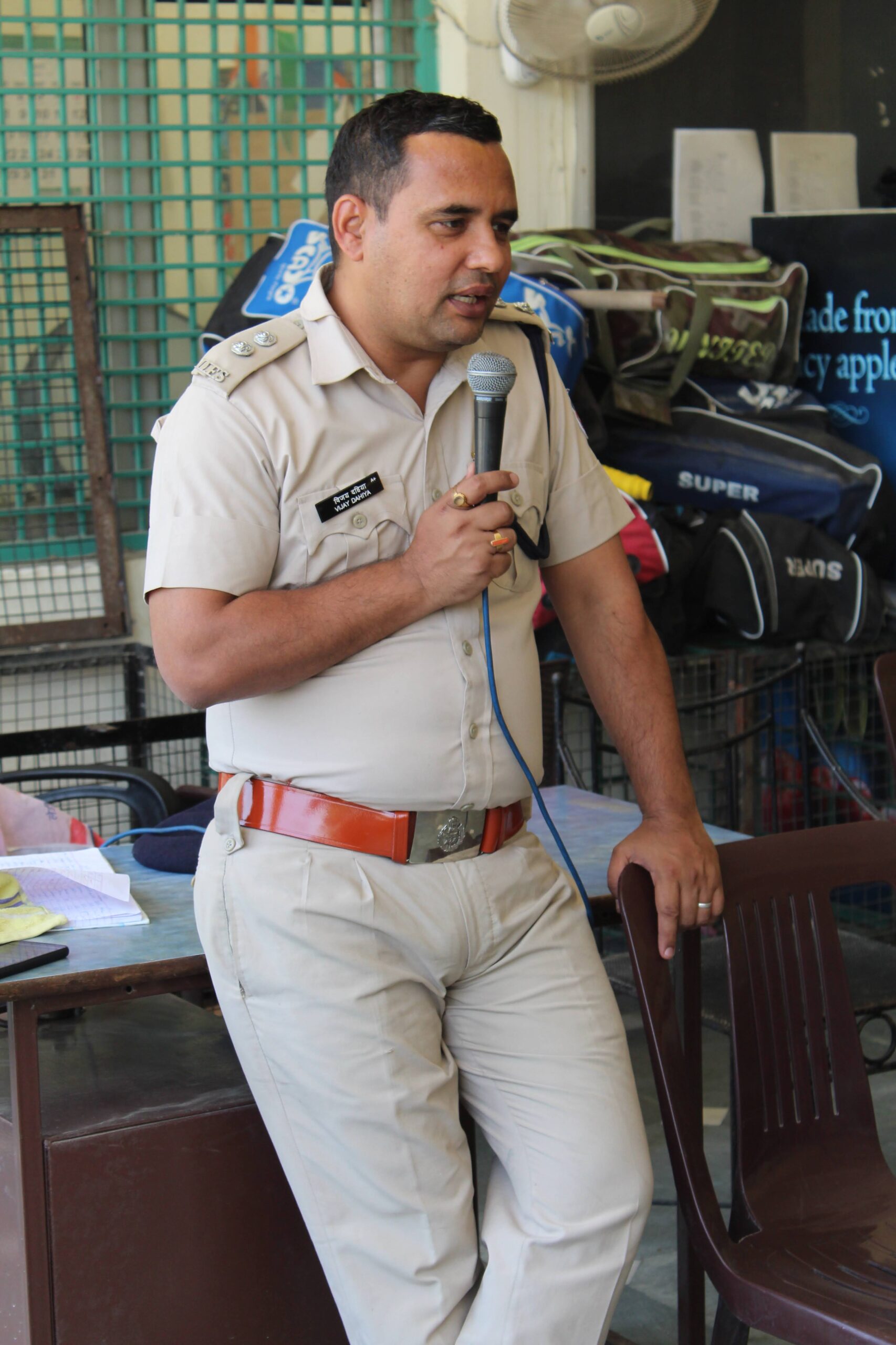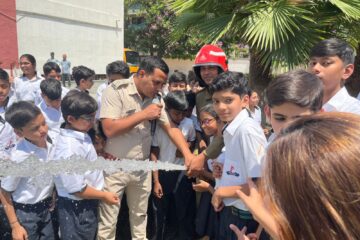
FAQ for Fire Safety Interviews
- What is the purpose of a fire safety interview?
The purpose of a fire safety interview is to assess an individual’s knowledge and preparedness regarding fire safety. It helps determine if they are familiar with fire hazards, understand proper evacuation procedures, and are aware of fire prevention measures. - What are some common fire hazards in the workplace?
Common fire hazards in the workplace include electrical equipment that may malfunction or overheat, flammable liquids or gases that can ignite easily, blocked exits that impede swift evacuation, and improper storage or handling of combustible materials. - What is the recommended action in case of a fire?
In case of a fire, the recommended action is to immediately evacuate the premises. This involves alerting others in the vicinity, activating the fire alarm if available, and using the nearest fire exit to safely exit the building. It is essential to follow the established evacuation plan and avoid using elevators. - How often should fire drills be conducted in the workplace?
Fire drills should be conducted at least once every six months to ensure that employees are familiar with evacuation procedures and can respond effectively in an emergency situation. Regular drills help assess the efficiency of evacuation routes and identify any areas that require improvement. - What is the purpose of a fire extinguisher?
The purpose of a fire extinguisher is to suppress or extinguish small fires before they can spread and cause significant damage. Fire extinguishers contain materials designed to combat specific types of fires, such as those fueled by flammable liquids, electrical equipment, or ordinary combustible materials. - How do you operate a fire extinguisher?
To operate a fire extinguisher, remember the acronym PASS:
- Pull the pin: Pull the pin or safety clip located on the extinguisher to break the seal.
- Aim at the base of the fire: Direct the nozzle or hose at the base of the flames, aiming to extinguish the source of the fire.
- Squeeze the handle: Squeeze the handle or lever to release the extinguishing agent.
- Sweep from side to side: Sweep the extinguisher from side to side, covering the entire area of the fire with the extinguishing agent until the flames are fully suppressed.
7. What is the importance of smoke detectors in fire safety?
Smoke detectors play a crucial role in fire safety by providing early warning of a fire outbreak. These devices can detect the presence of smoke in the air and emit a loud alarm to alert occupants of the building. The early warning allows individuals to evacuate promptly and enables emergency responders to initiate firefighting efforts swiftly, potentially minimizing property damage and ensuring personal safety.
8. How can you prevent fires in the kitchen?
To prevent fires in the kitchen, it is important to adhere to the following measures:
- Avoid leaving cooking unattended: Stay present in the kitchen while cooking and never leave stovetops, ovens, or other cooking appliances unsupervised.
- Keep flammable objects away from the stove: Maintain a safe distance between flammable materials like kitchen towels, curtains, or paper products and heat sources.
- Ensure proper ventilation: Adequate ventilation, such as range hoods or opening windows, helps dissipate any potential build-up of flammable gases or smoke.
9. What should you do if your clothes catch fire?
If your clothes catch fire, it is crucial to act swiftly. Remember the phrase “Stop, drop, and roll.” Follow these steps:
- Stop immediately: Do not run, as it can fan the flames and cause the fire to spread.
- Drop to the ground or floor: Drop down to the ground or floor to limit the oxygen supply to the fire.
- Roll over: Roll over your body repeatedly to smother the flames. Covering your face with your hands can help protect it from the fire.
10. What are the key elements of an effective fire safety plan?
An effective fire safety plan should include the following key elements:
- Clear evacuation routes: Clearly marked and unobstructed evacuation routes that lead to designated assembly points outside the building.
- Designated meeting points: Predetermined locations where employees can gather after evacuating, allowing for a headcount and verification of everyone’s safety.
- Regular maintenance of fire safety equipment: Scheduled inspections and maintenance of fire extinguishers, smoke detectors, sprinkler systems, and other fire safety equipment to ensure their proper functioning.
- Employee training: Ongoing fire safety training and education for all employees, covering topics such as fire prevention, evacuation procedures, and proper use of fire safety equipment.
Certainly! Here’s the continuation of the expanded FAQ for Fire Safety interviews:
- What are some common causes of workplace fires?
Common causes of workplace fires include electrical malfunctions, improper storage or handling of flammable materials, careless smoking, faulty wiring, equipment overheating, and arson. It is crucial to identify and mitigate these risks to minimize the occurrence of fires. - How can employees contribute to fire prevention?
Employees can contribute to fire prevention by following safety protocols, reporting potential hazards, participating in fire safety training, practicing good housekeeping, properly storing and handling flammable materials, and being vigilant in identifying and addressing fire risks in their work areas. - Are fire extinguishers the only firefighting equipment in a workplace?
No, fire extinguishers are not the only firefighting equipment in a workplace. Other firefighting equipment may include fire hoses, sprinkler systems, fire blankets, and fire suppression systems. These additional measures provide different levels of protection and are typically tailored to the specific needs and hazards of the workplace. - How often should fire extinguishers be inspected?
Fire extinguishers should be inspected regularly to ensure they are in proper working condition. A general guideline is to have fire extinguishers inspected at least once a year by a certified professional. Additionally, visual inspections can be performed monthly to check for any visible signs of damage or tampering. - Is it important to have emergency lighting in a building?
Yes, having emergency lighting in a building is crucial for maintaining visibility and facilitating safe evacuation during power outages or emergencies. Emergency lighting systems typically consist of battery-powered lights that automatically activate when the regular lighting fails, ensuring that exit routes and critical areas remain illuminated. - What is the role of fire wardens in fire safety?
Fire wardens play a vital role in fire safety by assisting with the implementation of emergency procedures and evacuation plans. They help direct occupants to safe areas, conduct headcounts, ensure that fire doors are closed, and communicate with emergency services. Fire wardens are trained to take charge during emergencies and provide leadership in ensuring the safety of all occupants. - Can workplace fires be prevented entirely?
While it is not possible to eliminate the risk of workplace fires entirely, proactive fire prevention measures and strict adherence to safety protocols can significantly reduce the likelihood of fires. Regular risk assessments, employee training, proper maintenance of equipment, and a strong fire safety culture are essential in mitigating fire hazards. - What should be done if a fire alarm sounds in the building?
When a fire alarm sounds in the building, everyone should take it seriously and follow the established evacuation procedures. Stay calm, leave belongings behind, exit the building using designated evacuation routes, and gather at the designated meeting point. Do not use elevators and do not re-enter the building until authorities declare it safe to do so. - How can businesses ensure fire safety compliance?
Businesses can ensure fire safety compliance by conducting regular fire safety audits, implementing and enforcing fire safety policies and procedures, providing adequate training to employees, maintaining records of inspections and maintenance, and staying up to date with relevant fire safety regulations and codes. - What resources are available for further fire safety information?
For further fire safety information, businesses and individuals can consult local fire departments, fire safety organizations, government fire safety agencies, and official fire safety guidelines and publications. These resources provide comprehensive guidance on fire prevention, preparedness, and emergency response.
read more on www.vijayDahiya.com/blog

